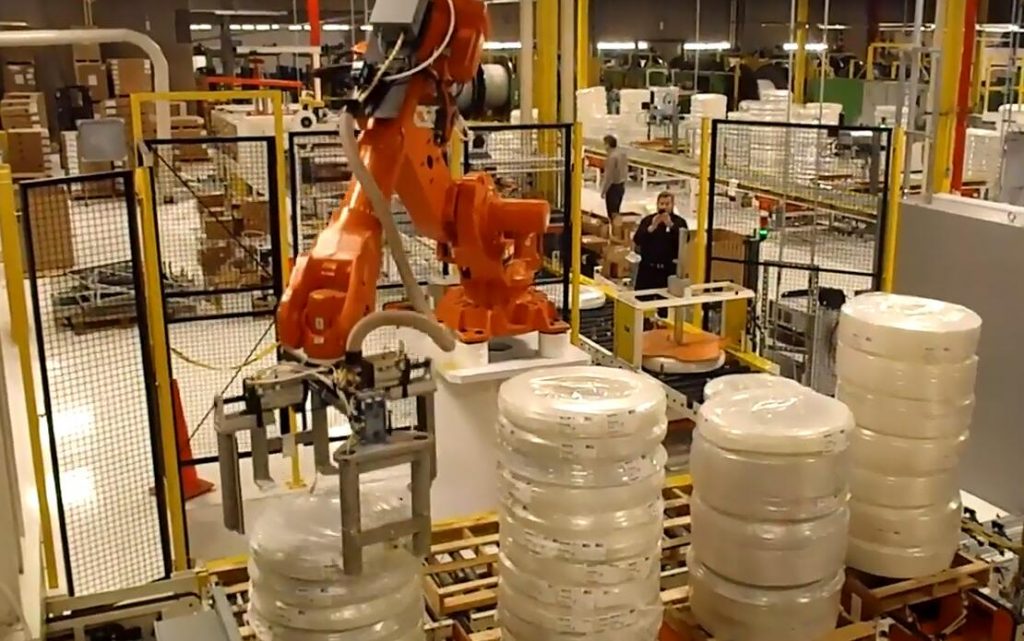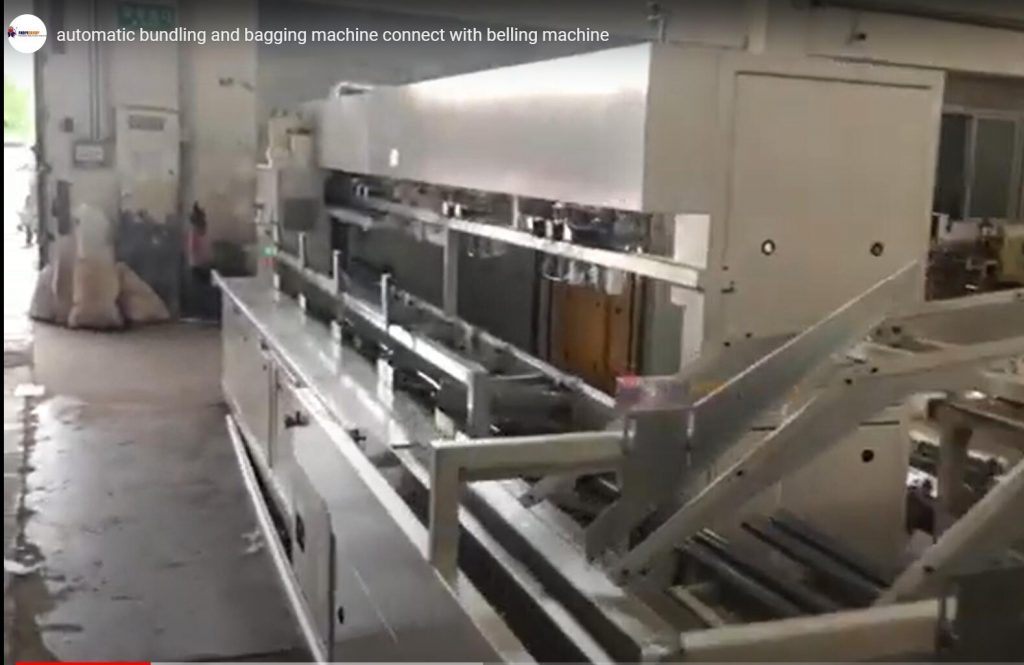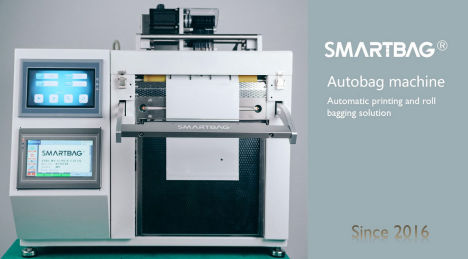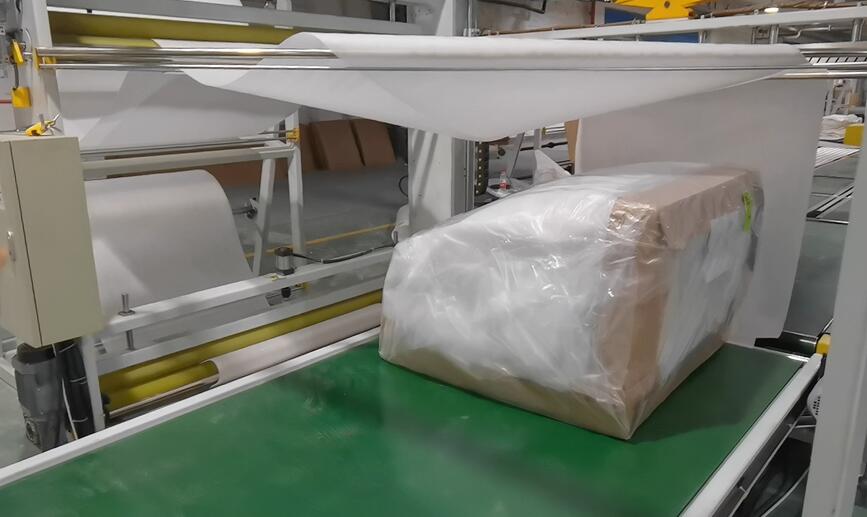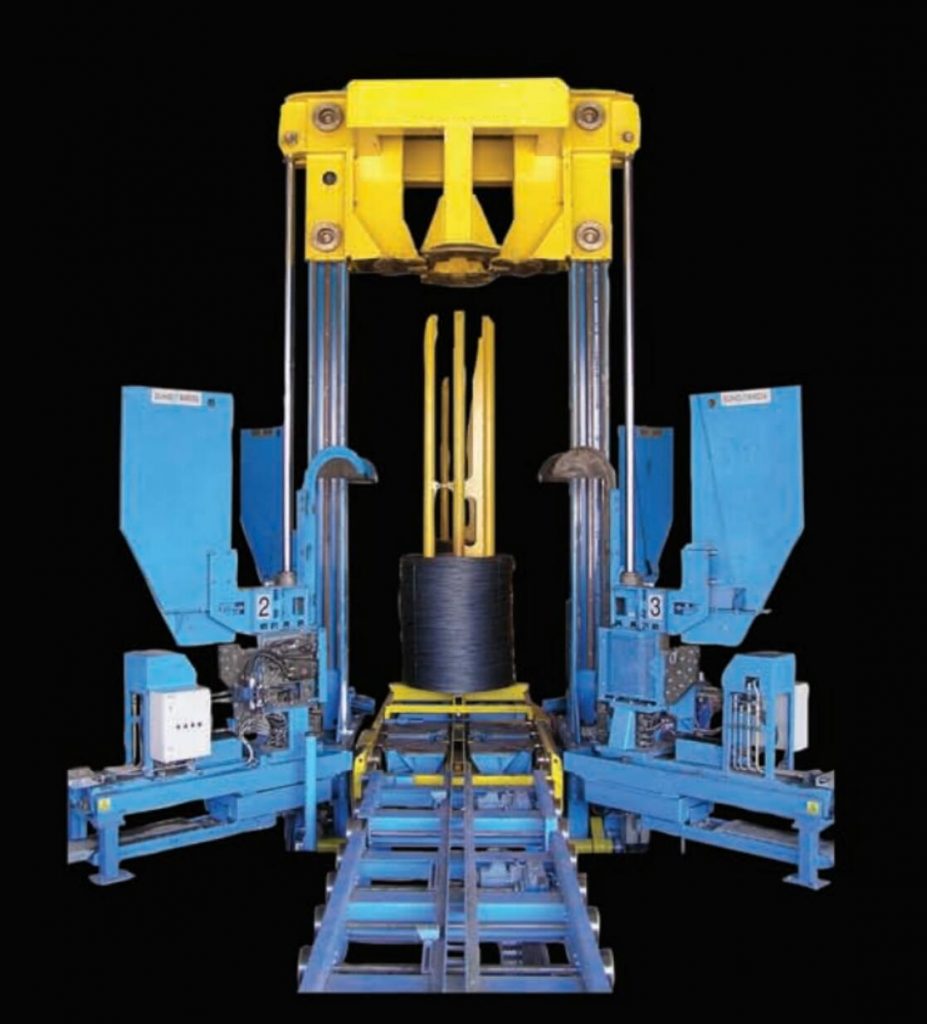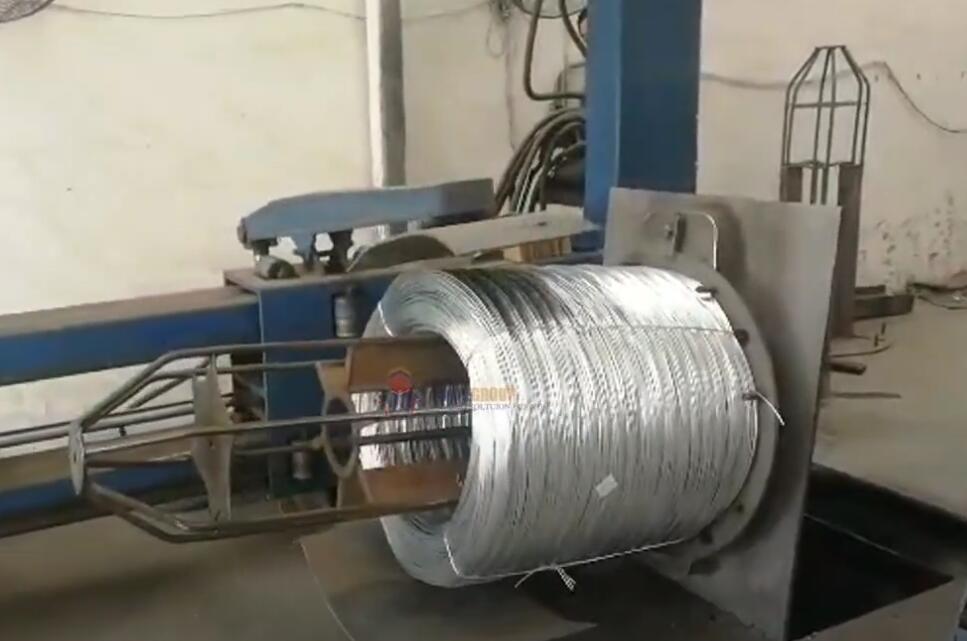Engineering Focus: Automating PVC Cable Raceway Packaging Operations
The efficient handling and packaging of elongated extruded profiles, such as PVC cable raceways, present persistent challenges in manufacturing and distribution environments. Manual processes are often labor-intensive, prone to inconsistencies, and can introduce risks related to ergonomics and product damage. Addressing these challenges requires robust automation solutions, exemplified by systems like the FHOPE Automatic PVC Cable Raceway Bundle Packing Line. This integrated system provides an end-to-end automated workflow, encompassing collation, bundling, wrapping, and bagging.
System Architecture and Core Technologies

Optimized packaging lines integrate several key technological modules to achieve high throughput and reliability. Drawing inspiration from advancements documented in material handling patents and automation research, these systems typically feature:
Automated Infeed and Collation
Profiles are received from upstream processes (e.g., extrusion lines, cutting stations) via powered roller or belt conveyors. Photoelectric or laser sensors detect product presence and dimensions, triggering collation mechanisms. These often employ pneumatic actuators or servo-driven pushers to accurately group a pre-set number of raceways into a bundle configuration, mirroring principles found in automated collation patents (e.g., related to grouping elongated items).
Precision Bundling Module
Once collated, the bundle is transferred to the bundling station. Common methods include:
- Stretch Film Bundling: Utilizes stretch film applied circumferentially to secure the bundle. Tension control is critical for stability without product deformation.
- Strapping: Employs PP (Polypropylene) or PET (Polyester) straps, automatically fed, tensioned, sealed (heat or friction weld), and cut. This method is often preferred for heavier or more rigid bundles.
Orbital Stretch Wrapping Integration
For comprehensive protection and unitization, especially for longer bundles, orbital stretch wrapping is frequently integrated. The bundle passes horizontally through a rotating ring carrying a roll of stretch film. This allows for a complete, tightly wrapped cocoon around the product. Advanced systems feature adjustable film pre-stretch capabilities (often achieving ratios up to 250-300%), significantly reducing film consumption per bundle – a key metric aligned with packaging efficiency standards like ASTM D4649.
Poly-Bagging and Sealing (Optional Module)
For enhanced environmental protection or specific retail requirements, an automated bagging module can follow the wrapping stage. This involves creating a bag from a roll of PE (Polyethylene) film, inserting the wrapped bundle, and then sealing the bag, typically using impulse or constant heat sealers. Cut-off mechanisms ensure clean bag separation.
PLC Control and Human-Machine Interface (HMI)
The entire line operates under the supervision of a Programmable Logic Controller (PLC), such as those from manufacturers like Siemens or Allen-Bradley. The PLC synchronizes all modules, monitors sensor inputs, and controls actuators. A touchscreen HMI provides operators with system status visualization, parameter adjustment (e.g., bundle count, wrap revolutions, tension settings), diagnostic information, and recipe management for different product sizes. Integration with plant-level Manufacturing Execution Systems (MES) or ERP systems via protocols like OPC UA or EtherNet/IP is increasingly common for data logging and operational oversight.
Enhancing Throughput and Reducing Operational Costs
The implementation of automated packaging lines yields significant quantifiable benefits:
- Increased Throughput: Automation drastically reduces cycle times compared to manual or semi-automatic methods. Depending on the configuration and product length, systems can process multiple bundles per minute, directly increasing output capacity. Studies in industrial automation frequently cite throughput increases of 40-70% post-automation.
- Labor Optimization: Automating repetitive tasks like bundling, wrapping, and bagging frees up human operators for higher-value activities, reducing direct labor costs per unit packaged.
- Improved Consistency and Quality: Automated systems ensure each bundle is packed to the same specification, enhancing load stability and reducing product damage during transit and storage. Film tension and application are precisely controlled, unlike manual wrapping.
- Material Savings: Optimized pre-stretch mechanisms in wrapping modules minimize film usage. Precise control over bag sizing reduces PE film waste.
- Enhanced Safety: Enclosed guarding, safety interlocks, emergency stop circuits, and light curtains mitigate risks associated with manual handling and moving machinery, contributing to compliance with safety standards (e.g., ISO 12100, ANSI/PMMI B155.1).
Key System Specifications (Typical Range)
While specific configurations vary, typical parameters for such lines include:
- Product Size Capability:
- Length: Commonly 2 meters to 6 meters (customizable)
- Bundle Cross-section: Up to 200mm x 200mm (or as specified)
- Throughput: 2 to 6 bundles per minute (highly dependent on product length and wrapping parameters)
- Primary Bundling Method: Stretch Film / PP Strapping
- Wrapping Technology: Orbital Stretch Wrapper with adjustable electronic pre-stretch
- Bagging Material: PE Film Rolls
- Control System: PLC (e.g., Siemens, Allen-Bradley, Omron) with Color Touchscreen HMI
- Power Requirements: Typically 400-480V/3Ph/50-60Hz
- Compliance: CE Marking, ISO 9001 manufacturing environment
Applications in Cable Management and Manufacturing
Automated packaging lines for PVC raceways and similar profiles are essential for:
- Manufacturers of electrical conduit and cable management systems.
- Building material suppliers and distributors.
- Companies involved in plastic extrusion processes requiring downstream packaging automation.
A Strategic Investment in Packaging Automation
Transitioning to automated packaging systems like the FHOPE Automatic PVC Cable Raceway Bundle Packing Line represents a strategic investment for manufacturers seeking to enhance operational efficiency, improve package quality, reduce costs, and maintain a competitive edge. The integration of proven technologies under sophisticated PLC control delivers a reliable and high-performance solution tailored to the specific demands of handling long, extruded products.
For further technical details or specific application inquiries, please contact info@fhopepack.com.

